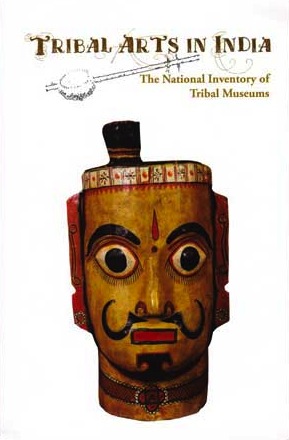
Indira Gandhi Rashtriya Manav Sangrahalaya
National Museum of Mankind, Bhopal, Madhya Pradesh
Watch a video on the Tribal Museum video channel
The Indira Gandhi Rashtriya Manav Sangrahalaya is spearheading an interactive Museum Movement in India, to celebrate the simultaneous validity of various valuable cultural patterns evolved over thousands of years. The Organization is working for national integration, and promotes research and training and inter-institutional networking for salvage and revitalization of vanishing but valuable cultural traditions and highlights the unity and diversity; and organizes exhibitions to present an integrated story of biological evolutions and variations. The IGRMS, through its exhibitions and salvage activities, demonstrates the aesthetic qualities of India’s traditional life styles; local knowledge and mores, and caution the people against unprecedented destruction of ecology, environment, local values, customs, etc. There is a paradigm shift in museum education process and IGRMS envisages a definite role for itself in this process. […]
The celebration of cultural diversity and national integration has been an important aspect of museum education. But the challenge in a post-colonial situation is how to display cultural diversity in multiple voices. Some might say that this could go against national integration. But to me, homogenization of multiple voices in the name of integration would result in not only intellectual sterilization of the museum profession, but also would do more dis-service to the cause of national integration by silencing and stifling the dissenting imagination. Could today’s museum professionals live up to the challenge of displaying dissenting imagination? Only posterity will evaluate our success or otherwise in this regard.
Source: Indira Gandhi Rashtriya Manav Sangrahalaya
Address: http://igrms.gov.in/aboutus/mission
Date Visited: Mon Nov 07 2016 19:42:40 GMT+0100 (CET)
Creation of Indira Gandhi Rashtriya Manav Sangrahalaya
A nucleus of a ‘National Museum of Man’ began functioning from New Delhi from 21st March, 1977 as part of the Anthropological Survey of India. In 1978 it was separated from the Anthropological Survey of India and declared as an Independent Subordinate Office of the Department of Culture (now Ministry of Culture), GOI. In March 1985 the Museum was renamed as Rashtriya Manav Sangrahalaya, at the instance of the then Prime Minister, Mrs. Indira Gandhi, which was later (1993) through a Cabinet decision named after Indira Gandhi as Indira Gandhi Rashtriya Manav Sangrahalaya. For international perspective the term ‘National Museum of Mankind’ was adopted. Unlike other national Museums, which were set up to house certain collections in possession, the IGRMS was started without any collection to display, rather with a set of ideas. Indira Gandhi Rashtriya Manav Sangrahalaya acts as a facilitator for forging interrelation between Community and Museums.
Updated date: 29-12-2015
Source: Indira Gandhi Rashtriya Manav Sangrahalaya | इन्दिरा गांधी राष्ट्रीय मानव संग्रहालय
Address: https://igrms.gov.in/en/aboutus/organization
Date Visited: 5 March 2024
[Bold typeface added above for emphasis]
View or download this Pictorial Guide (Backup, 6,5 MB)
Museum of Mankind Bhopal: its scope and history
Preface
IGRMS, which is also popularly known as Manav Sangrahalaya, has initiated a new museum movement in India. Being a prime Anthropological museum of India, it is engaged in depicting the bio-cultural evolution of man in time and space to depict a comprehensive understanding of the human journey. Along with open air exhibitions spread over 200 acres of land in Shamla Hills, Bhopal, the indoor museum building called “ Veethi Sankul”, houses 12 galleries with about 4462 objects which are displayed in very unique and innovative ways. These galleries have generated huge interest among the visitors irrespective of their age and gender. Some of the latest addition includes, gallery of musical instruments and galleries focusing the cultural diversities of the people of North East India. This pictorial guide will definitely help our visitors to have an understanding of the nature of diverse galleries and as per their interest they can move through the various segments of Veethi Sankul and explore the treasure of our collections depicting our civilizational journey.
The Museum of Mankind
The emerging need of a New Museum Movement in India was realized in the late 20th century. Dr. Sachin Roy, a museum visionary and renowned anthropologist, had conceptualized the outlines of a ‘Museum of Man’ in India that could present a holistic vision of human life and interpret the cultures of India.
His noble ideas, presented in the Calcutta Session (1970) of Indian Science Congress was buttressed by several social scientists and supported by the then Prime Minister of India, late Mrs. Indira Gandhi. A nucleus office of the Museum was opened at New Delhi in March 1977 as part of the Anthropological Survey of India. In 1979 it was shifted to Bhopal, the capital of Madhya Pradesh, on allotment of a 200 acre of campus scattered with pre-historic remains of mankind. Initially known as ‘National Museum of Man’, this Institution was converted into an Autonomous Organisation of Government of India, Ministry of Culture in March, 1985 and renamed as ‘Rashtriya Manav Sangrahalaya’.
It was rechristened as ‘Indira Gandhi Rashtriya Manav Sangrahalaya (IGRMS), in 1993, in recognition of the seminal contribution of Smt. Indira Gandhi towards a New Museum Movement.
Source: A Pictorial Guide on Veethi Sankul: The Indoor Museum Galleries of IGRMS published by Director, Indira Gandhi Rashtriya Manav Sangrahalaya, Bhopal (National Museum of Mankind)
URL: https://igrms.gov.in/sites/default/files/Guide%20Book%20of%20Veethi%20Sankul.pdf
Date Visited: 5 March 2024
10 Museums Of Bhopal: http://www.bhopale.com/place/10-museums-of-bhopal

Read or download titles for free (eBooks & Magazine) >>